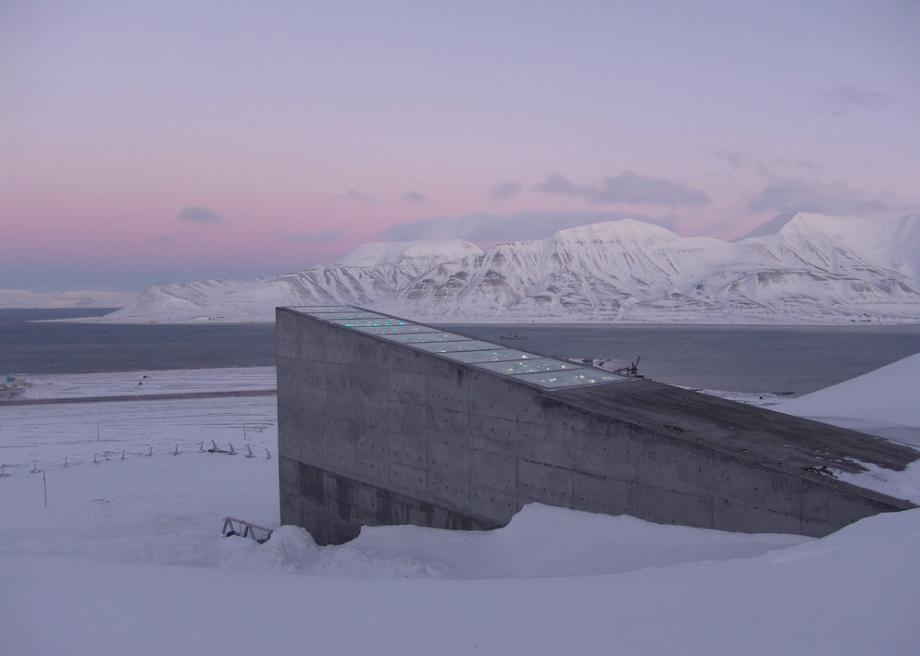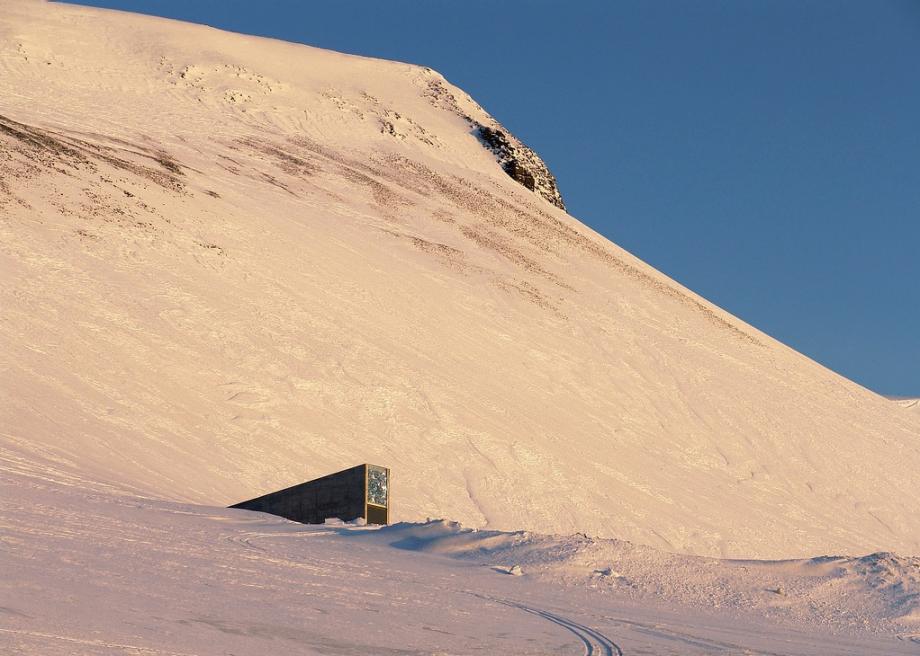Svalbard Global Seed Vault: A Giant Fridge that Stores Food for Doomsday
Atlas Obscura on Slate is a new travel blog. Like us on Facebook, Tumblr, or follow us on Twitter @atlasobscura.
A "winter night" in Longyearbyen lasts four months. In the ice-covered mountains, the darkness is broken only by a slim concrete building that emits a pale blue glow as it overlooks the 1,000-resident town. The simple structure offers no hint to what's protected in its interior chambers: a collection of seeds that could save humanity.
Due to the loss of genetic diversity among commercially cultivated crops -- which tend to be grown from clones -- many worldwide food crops are at risk of disease. Mutated strains of fungus, or a new bacteria could potentially wipe out an entire world crop in matter of months, causing massive food shortages. The Svalbard Global Seed Vault was established by the Norwegian government in 2008 to function as a sort of genetic safety deposit box.
The facility has the capacity to conserve 4.5 million seed samples. Under the current temperature conditions in the vault, which are similar to those in a kitchen freezer, the seed samples can remain viable to begin new crops for anywhere from 2,000 to 20,000 years. Currently the seed bank at Svalbard stores duplicate specimens from gene banks worldwide.
Svalbard was chosen as the location because it is tectonically stable and its permafrost provides natural refrigeration in case of a power failure. There is no permanent staff at the seed bank but it is monitored constantly using electronic surveillance. Access to the vaults, open only to employees, requires passing four locked doors protected by coded access keys.
Thinking ahead:


